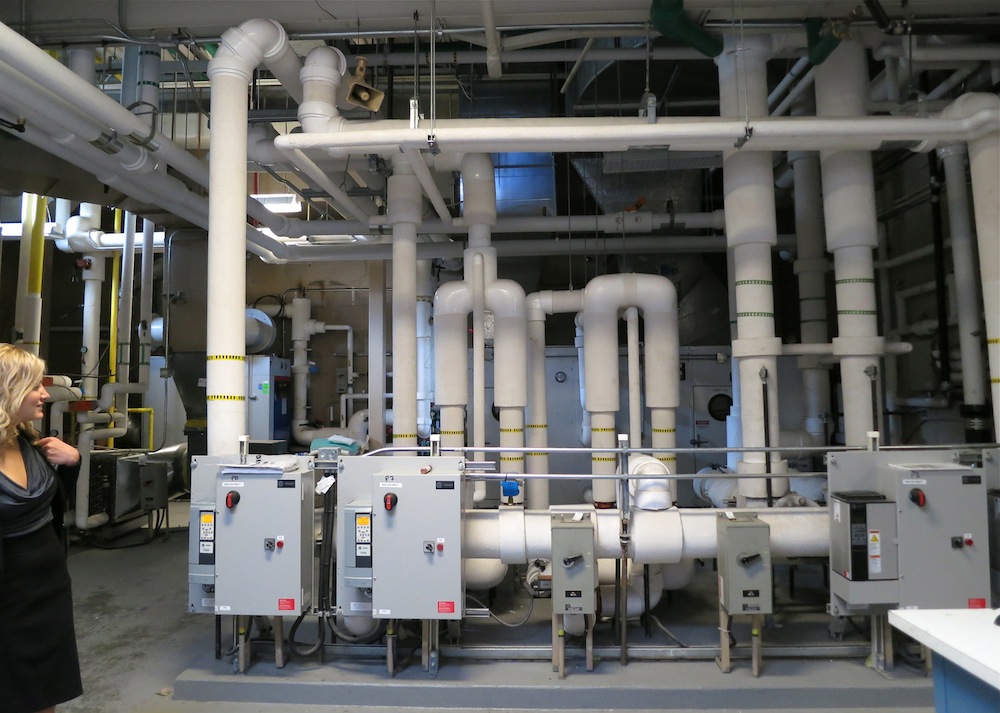The North American Insulation Manufacturers Association (NAIMA) has issued a new publication, “Guide to Insulating Chilled Water Piping Systems With Mineral Fiber Pipe Insulation.”
Developed for professional insulation contractors, the 36-page guide recommends methods for insulating chilled water piping systems using a vapor-sealed mineral fiber pipe insulation.
"Insulation systems are critical to limiting heat losses and preventing condensation on pipe surfaces operating from 33 degrees F to 60 degrees F (0.5 degrees C to 15.6 degrees C) within conditioned spaces in commercial and institutional buildings," says Charles Cottrell, vice president technical services for NAIMA. "When poorly applied, however, an insulation system can compromise insulation effectiveness.”
“NAIMA developed this step-by-step guide for applying vapor-sealed mineral fiber pipe insulation, which when installed according to the guide's recommendations, can effectively control condensation, help extend the life of the insulation system, and save energy," Cottrell says.
The guide addresses the installation of standard ASJ jacketed pipe insulation and presents recommendations based on reliable engineering principles and research, as well as consultation with manufacturers, contractors, and industry experts.
It details insulation application on straight pipe; on pipe system fittings including flanges, couplings, elbows, tees, and valves; and on 45- and 90-degree elbows. Also included are details on vapor dams, pipe supports, and field-applied jackets.
Other sections include performance criteria, a guide specification, and installation checklist. Click here to download a free copy of the guide.
Related Stories
| Nov 23, 2011
USGBC launches app lab for LEED certification process
The U.S. Green Building Council has released the App Lab, a searchable catalog of third-party apps that are integrated with LEED data.
| Nov 23, 2011
Document gives advice on stormwater runoff management
The report, “Rooftops to Rivers II,” provides tips on how cities can use smart infrastructure and green building design to minimize pollution from stormwater runoff and other wastewaters.
| Nov 23, 2011
Zoning changes proposed to make New York City buildings greener
New York City will introduce new zoning proposals next month that would make it easier for building owners to add features that will make their properties more sustainable.
| Nov 18, 2011
AGC offers webinar on Davis-Bacon compliance
Webinar to be held in two sessions, Dec. 7 and 8 from 2:00-3:30 p.m. EST.
| Nov 18, 2011
New green construction code may help push LEED standards higher
The International Green Construction Code (IgCC) is expected to set a floor for building standards and may create the opportunity for LEED certifications to push toward higher ceilings.
| Nov 18, 2011
New OSHA fall safety rule could save contractors money on insurance premiums
The new Occupational Safety and Health Administration rule requiring employers operating in the residential construction industry to use the same methods of fall protection that historically have been used in the commercial construction industry could save them money.
| Nov 18, 2011
Some believe new Austin building code will help mom and pop shops
Austin, Texas has proposed building codes that require wider sidewalks and call for buildings to be closer to sidewalks along a 3.5-mile stretch of highway.
| Nov 11, 2011
AIA: Engineered Brick + Masonry for Commercial Buildings
Earn 1.0 AIA/CES learning units by studying this article and successfully completing the online exam.
| Nov 10, 2011
WaterSense standard for weather-based irrigation controllers unveiled
The U.S. Environmental Protection Agency’s (EPA) WaterSense program has released a final specification for weather-based irrigation controllers—the first outdoor product category eligible to earn the WaterSense label.
| Nov 10, 2011
Advocate seeks noise reduction measures in California building codes
A former chief building inspector for San Francisco wants to enact building codes that would limit noise levels in restaurants and other spaces open to the public.















